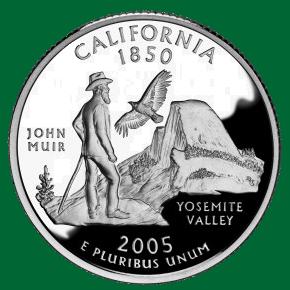
There is an unknown layer
of government in
This unknown government
currently consumes 8 percent of all property taxes statewide, $1.5 billion in
1997. It has a total indebtedness of over $41 billion.
Unlike new counties,
cities and school districts, it can be created without a vote of the citizens
affected.
Unlike other levels of
government, it can incur bonded indebtedness without voter approval.
This unknown government
provides no public services. It does not educate our children, maintain our
streets, protect us from crime, nor stock our libraries.
It claims to eliminate
blight and promote economic development, yet there is no evidence it has done
so in the half century since it was created.
Indeed, it has become a
rapidly growing drain on
This unknown government
is Redevelopment. It is time Californians
knew more about it.
Prior to
2002: There have
been 7 previous unsuccessful attempts to create a redevelopment agency in
Pre-election
2002:
Menesini announces he won’t seek fifth term as Mayor. Council members Schroder
and Ross (Ross has declared that he ran for Council so he could run for Mayor)
throw in their hats mid-term. Linda Lewis, whose
Council term is up, has decided to throw in her hat in for Mayor as well,
rather than seek re-election to Council. Barbara Woodburn, long a popular
Council member, decides not to seek re-election. The Council race is thus very
wide open, and seven candidates run for the open Council seats. Shortly
before the election John Foley, is brought in as editor of the Gazette.
Foley’s tenure as editor is marked by sensationalistic journalism
including personal attacks on candidates and editorials masquerading as
news. Foley’s editorials were strongly pro redevelopment. For perhaps the
first time, redevelopment is openly discussed as an option by candidates
during an election. The community becomes noticeably polarized.
Election
2002: Schroder
wins the Mayor's race. Wainwright wins a Council seat with the most votes of any
candidate in either race. DeLaney has the next highest vote count for
Council. Platt is a close runner-up to DeLaney. After a contentious
Council session led by Schroder, Janet Kennedy - relative political
unknown, non-candidate, and wife of CCCo Redevelopment Director Jim Kennedy -
rather than Platt, is appointed to the Council seat opened up by Schroder's
successful move to the Mayoralty.
2003,
early 2004: With
a 4-to-1 pro-RDA majority, the Council openly discusses redevelopment.
Keyser-Marston is selected in closed session to perform a blight
study. Late in 2003, the Council decides, rather than actually create a
redevelopment agency (RDA), to put an RDA advisory measure, Measure M, before
the voters. On Christmas Eve, 2003, after ballot arguments have been
submitted and the final ballot argument submission deadline approaches, and
with only 24 hour's notice, Al Turnbaugh, plaintiff, with supporting letters
from Schroder and Kramer, and with the Mayor of Concord as attorney, sues
the opponents of Measure M with the intent of removing the Measure M opposing
argument from the ballot. The opposition is able to retain local attorney Tom
Greerty at the last minute. The opposing argument remained largely intact.
Election
March 2004: Pro-M
forces outspend the opposition about 4-to-1, with expensive, glossy mailers
targeting
RDA ordinance
2004: On May 5,
the Council passes an ordinance creating an RDA. The
Council makes no promises whatsoever regarding goals, debt limits or
eminent domain. The expensive homes immediately east of downtown are included
in the hypothetical RDPA at the last minute, presumably to increase anticipated
RDA tax increment revenues. At the Council meeting two weeks later, 5/19, the
ordinance receives its second reading. The opposition mounted a successful
request for a referendum within the 30 day period after the ordinance was
signed.
Referendum
2004: In 2004,
RDA creation is still treated by law as just another Council action, and so
there are only 30 days to collect 10% of the registered voters' signatures
for a referendum. What follows: weekend union-hall breakfasts followed by
walking; phone networking; shopping center signature gathering; evening
walking. A bit before the 30-day deadline, over 3100 signatures (almost
50% more than required) are submitted. The referendum petition is subsequently
certified, and the RDA ordinance is suspended.
RDA
ordinance rescission 2007: despite calls for a vote, the Council sits on the
ordinance and does nothing. Finally, on